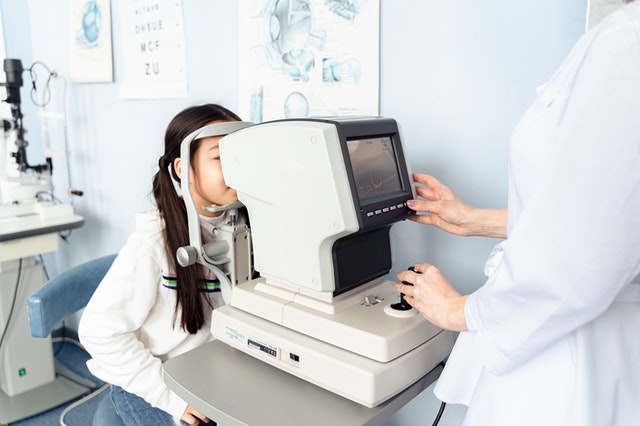If you suspect your child may have progressive myopia, you might be concerned about how their vision is going to progress as they get older or you may be confused about what this term means altogether. In this post, we will clarify what myopia is, how it affects your child’s eyesight, and what you can do to help them.
What is Progressive Myopia?
Myopia is another term for nearsightedness. Your child will be able to see objects close to them, but they may not be able to see objects or letters further away. We often see myopia manifest itself in a few different ways. One example is when your child has trouble seeing the board when they are at school.
Progressive myopia is a condition of nearsightedness where their myopia gradually gets worse year after year. It occurs because the shape of the eyeball becomes longer from front to back, similar to an oval. The condition often affects children and teenagers, but it can also continue to affect your child into their early adulthood.
Risks of Progressive Myopia
If your child’s condition isn’t treated effectively, then progressive myopia can turn into high myopia.
High myopia is a condition characterized by severe nearsightedness, and it can increase your child’s risk of developing other eye disorders.
Since the eyeball is becoming longer and the retina is stretching along with it, your child can potentially experience the following conditions.
Glaucoma
Glaucoma occurs when the pressure in your eyeball reaches dangerously high levels. As a result of this pressure, the nerves in the eye become damaged. The only time you will experience noticeable symptoms is in the late stages of this disease. Blurred vision, headaches, light halos, and loss of peripheral vision are common in the late stages.
This is one prime example of why it’s so important for your child to get comprehensive eye exams regularly.
Detachment of the Retina
Retinal detachment occurs when the retina detaches from the eye’s supporting tissue. The retina is a thin layer of tissue at the back of the eye that receives light and sends visual signals to your brain.
If your child sees sudden flashes of light, abnormal shadows, or small particles of debris in their eyes, be sure to receive immediate medical attention.
Macular Degeneration
Macular degeneration occurs when a specific part of the retina, called the macula, is damaged. The macula is responsible for what we see in the center of our vision field, as well as our perception of color and fine details.
This damage can eventually lead to vision loss.
How to Prevent Progressive Myopia from Further Developing
Your pediatric ophthalmologist will know of several different treatment paths and decide which one is right for your child.
Orthokeratology
Orthokeratology is the use of a specific type of contact lens. These rigid contact lenses help to temporarily improve vision and reshape the cornea in order to prevent elongation of the eye. Your child will usually need to wear them overnight and then take them off in the morning.
Myopia control glasses
Myopia control glasses are a special pair of glasses that help prevent your child’s myopia from worsening.
Atropine eye drops
Eye drops with atropine can temporarily relax certain focusing muscles inside of your child’s eyes, slowing the progression of myopia.

